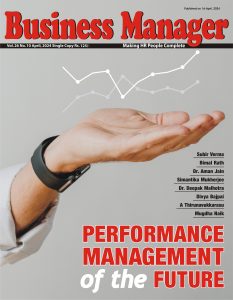Covid-19 has changed organizational operating models altogether. Various trends have emerged ever since and the most significant one is the rising prominence of tier 2 and 3 cities as alternate destinations for talent search.
Until now, urban cities were considered to be the go-to markets for sourcing talent as these locations offer a plethora of employment opportunities. The other regions were not preferred due to the unavailability of robust infrastructure, lack of talent density, etc. Companies are now increasingly setting up COE’s and Satellite offices in tier 2 cities. Organizations now are deploying creative strategies to address talent gaps and tap into the high-quality pool of talent available in tier 2 &3 cities.On the basis of parameters such as city attractiveness, ease of operations and doing business, connectivity, talent availability, cost index, climate and safety; industry estimates point out that Ahmedabad, Coimbatore, Chandigarh, Jaipur, Madurai, Goa, etc. are the top cities preferred by organizations for onboarding talent across tier 2 and 3 cities.
In fact in 2021, this was the industry trend. With work from home now inducted as one of the operating models in India Inc., tier 2 and 3 cities have emerged as alternate and preferred talent hubs. Jobs that can be handled remotely and performed digitally are increasingly doing away with restrictions associated with location. This can be confirmed with the increase in number of new offices and co-working facilities in these cities.
Indeed the question that would strike the minds of many is- how these regions can be employable areas, especially IT hubs. The fact of the matter is that these areas possess entry-level talent in abundance that comes with zeal and enthusiasm to perform optimally and deliver to the best of their capacity. These resources are energetic to put in their best so as to build a career for themselves.
Also read: Centre not yet ready with labour code implementation plan: Indian Staffing Federation
Reverse migration: The growing concept
Now, the scenario is such that talent can be sourced from any place. And this has been possible primarily due to technological advancements. Consequently, now, with remote and hybrid work models, talent need not stay away from families to build their future. The level of collaboration has been extensive and so smooth that professionals who had earlier shifted their base to build a life and career are now moving back to their home towns.
With this trend of reverse migration picking up pace, the hub and spoke model is gradually making its way wherein one central office hub is present and works in tandem with smaller spokes also known as satellite offices. This provides flexibility to the employees as they can work at their pace and convenience from their homes.
This is just an expansion strategy for them. They eventually train the talent in-house hired locally for the required industry skills. Various programs and initiatives either independently or in collaboration with ed-tech and/or other firms are launched that impart training on various industry skills including software programming, design and business management, etc.
Even the rural areas possess deserving talent in abundance. It’s all about conducting a thorough research and eventually hiring them. Various globally recognized firms are cashing on this trend and are planning to open up their research centers in tier 2 and 3 cities. Organizations are also developing programmes to source new talent pools that are not based on geographical location but on their skills. In fact, businesses are supporting the employees’ decision of relocating to their home towns since it could emerge to be one of the effective CSR strategies for them.
People from the smaller cities are keen to learn, adapt quickly, and are grounded. Going to the smaller cities helps companies have access to a larger talent pool that has the potential and is seeking opportunities but is yet to be tapped. Businesses across sectors and especially tech companies are opening up product centers or satellite offices in suburban areas due to this very reason. This is just an expansion strategy for them. They eventually train the talent in-house hired locally for the required industry skills. Various programs and initiatives either independently or in collaboration with ed-tech and/or other firms are launched that impart training on various industry skills including software programming, design and business management, etc.
There has also been an exponential increase in average salaries for talent hailing from tier 2 cities at junior, mid and senior levels.The growing investments in building physical and social infrastructure have led to the rise in salary levels in tier 2 cities. This depicts that tier 2 and 3 cities are progressing and eventually becoming the next employment hubs. Chandigarh for instance offers a pay scale of average CTC Rs. 5.7lacs per annum and Rs. 13.7lacsper annum at the junior and mid-levels respectively, which is significantly ahead of the national averages Rs. 4.4 lacs and Rs. 11 lacs. At the senior level, it offers the third highest salary slabs. At senior-levels, Ahmedabad offers an average CTC of Rs. 31.9lacs, higher than Hyderabad (Rs. 29.8 lacs), Chennai (Rs. 28.6 lacs), and Kolkata (Rs. 28.6 lacs).
Work following talent
Earlier talent used to follow work but now the tables have turned. All that businesses require is talent that is worthy, skilled, and capable of driving business objectives. Location is no longer a stringentcriteria. Surpassing the restriction of geographies, companies are keen to hire from tier 2 and 3 citiesas it helps them have access to the unexplored and raw talent that can be skilled and trained as per the company’s expectations. It also helps them expand their presence and reach beyond tier 1 markets at comparatively lower costs. Setting up offices in these citiesallows companies access to affordable real estate and larger spaces where they can build as well as design offices that are spacious and sustainable.
With reverse migration and the hybrid model of working becoming the new normal, it is expected that tier 2 and 3 cities will drive the next wave of the digital revolution and will emerge to be the employment hubs for businesses across domains in the times to come!





























Add comment